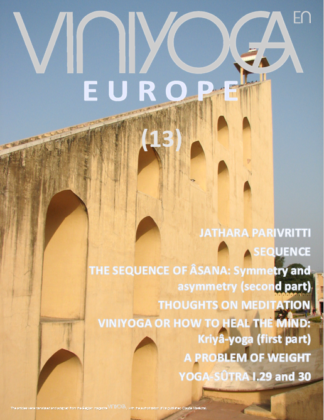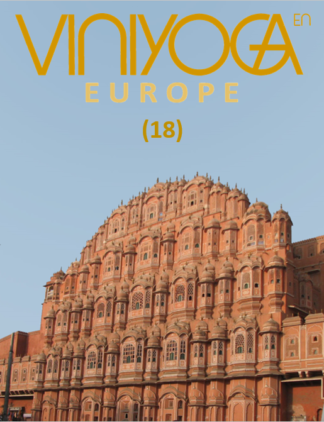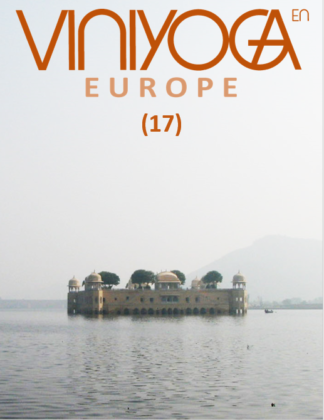Description
(41 pages)
INTERVIEW WITH SHRÎ KRISHNAMACHARYA (last part)
In the last two magazines (Viniyoga Europe 15 and 16), we published Professor Krishnamacharya’s answers to one question related to his studies and two other questions related to the technique of postures. Here we publish his answers to our last four questions.
CATUSHPÂDAPÎTHAM
Catushpâdapîtham or the Four Legged Table Pose is better known as a counter posture for pashcimatânâsana. It is a powerful, useful posture, but its practice requires caution.
By Claude Maréchal
SEQUENCE: CATUSHPÂDAPÎTHAM
This sequence contains four parts and presents an example of progression in order to master catushpâdapîtham.
By Claude Maréchal
VINIYOGA OR HOW TO HEAL THE MIND: nâbhi cakra, kantha-kûpa and kûrma-nâdî
The third chapter of Yoga-Sûtra gives us precious indications about physical and mental health. The teachings from certain aphorisms, when well adapted to each particular case, may give us clues for therapeutic applications. Detachment, quality of observation and technical expertise are the necessary attributes of the instructor for observing deeply the person who is being guided or treated.
By Claude Maréchal with the collaboration of Élisabeth Wieczorek
FROM THAT WHICH IS GROSS TOWARDS THAT WHICH IS SUBTLE: the purification exercises in the Hatha-Yoga-Pradîpikâ
The purification exercises in the Hatha-Yoga-Pradîpikâ (known as kriyâ) have always fascinated the unwarned public. What place should we accord them? Should we have certain reservations about their use?
By Uwe Bräutigam
IS THE BEST THE ENEMY OF THE GOOD?
Doing a posture perfectly is one thing, understanding what it brings us is something very different!
By T.K.V. Desikachar
PRÂNÂYÂMA: The fruits of prânâyâma
The practice of prânâyâma bears fruits at different levels. Immediately and in the short term, it improves mental clarity and favors concentration and mental stability. It is also a prerequisite to the mastery of the senses. Finally, it prepares for the experience of the final, liberating detachment.
By Claude Maréchal with the collaboration of Sylviane Gianina
YOGA-SÛTRA I.35
Among the means to calm the mind, Patanjali suggests reflection on the activity of the sensory organs.
Comments By Professor Shrî T. Krishnamacharya; presentation and explications: T.K.V. Desikachar
THE STUDY OF SENSORY ACTIVITY, ACCORDING TO VYÂSA
The previous article mentions Vyâsa’s classical commentary. So we asked Philippe Geenens to complete the Yoga-Sûtra article, by presenting Vyâsa’s point of view on the sensory organs.
By Philippe Geenens





